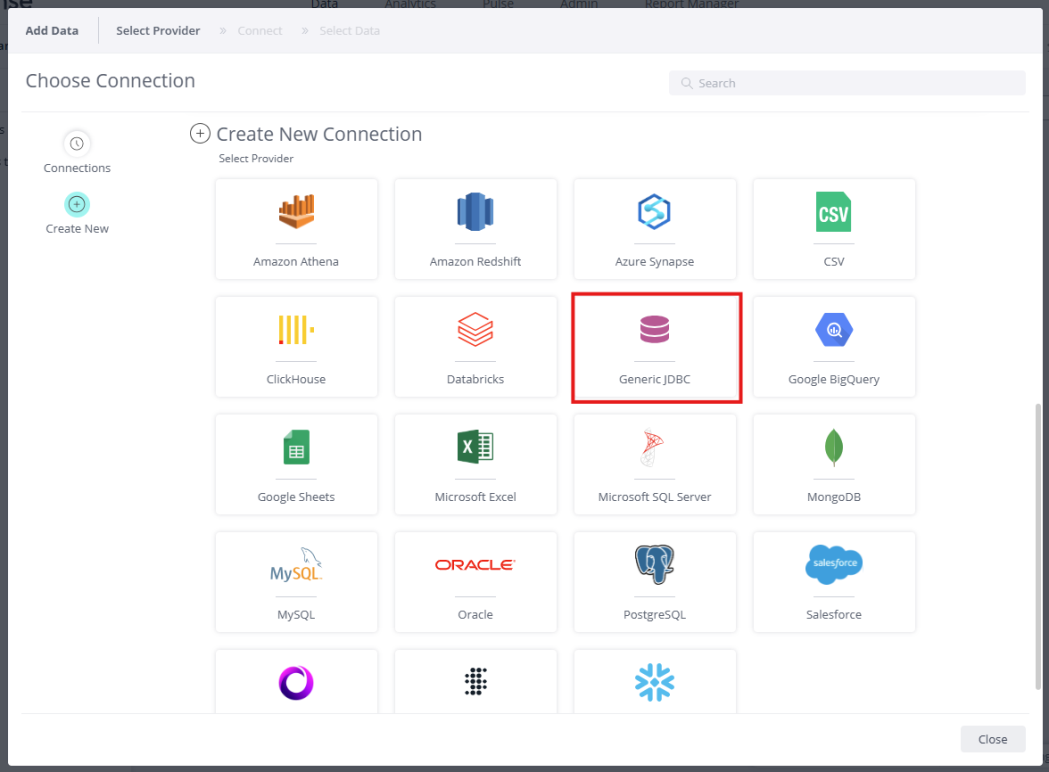Creating a Custom Connection
Sisense provides a generic Java Database Connectivity (JDBC) connector that you can configure to import data from a JDBC-supported source, for example, Postgres.
To import data from a JDBC-supported source, you need a connection string that defines the location of the database and the necessary properties required for accessing the database.
Keep in mind that each data source has its own requirements for connecting to it via JDBC. Refer to the provider documentation for this information.
Note:
For the list of supported connectors, see Data Source Connectors.
Creating a Connection String
With JDBC, a database is represented by a connection string, or URL, that defines its location and additional properties.
The connection string required to connect to a JDBC data source varies according to the requirements of that
particular provider. You should check the provider's documentation for details regarding their requirements.
For example, a connection string to a Postgres data source has the following form:
jdbc:postgresql://host:port/database
For Postgres, your connection string should include the following:
- Host: The host name of the server. Defaults to localhost. To specify an IPv6 address, enclose the
host parameter with square brackets, for example:
jdbc:postgresql://[::1]:5740/accounting - Port: The port number the server is listening on. Defaults to the PostgreSQL™ standard port number (5432).
- Database: The database name.
See Postgres JDBC documentation for more information.
Importing Data from a JDBC Data Source
To import data from a JDBC data source:
- In the Data page, open an ElastiCube or create a new ElastiCube.
-
In the Model Editor, click
 . The Add Data dialog box is displayed.
. The Add Data dialog box is displayed. 
-
Click
 and select Generic JDBC. The Create JDBC Connector page is displayed.
and select Generic JDBC. The Create JDBC Connector page is displayed.
-
Enter a Connector ID and Display Name for the connection.
-
Drag and drop the jar file or click browse and select the file to upload.
-
Enter the Class name and click Create.
JDBC Authentication
If you are using any browser-based authentication, for example, OAuth, while connecting to your data source with the JDBC connector, you need to update the JDBC configuration file. For information, click Configuring a Custom Connector to Use OAuth.
Accumulate Builds for JDBC Connector
By default, the data that comes from your JDBC data sources is not accumulated at the time of the build. To enable data accumulation by integer and date in tables originating from JDBC data sources, click Enabling Accumulative Build for Connector.